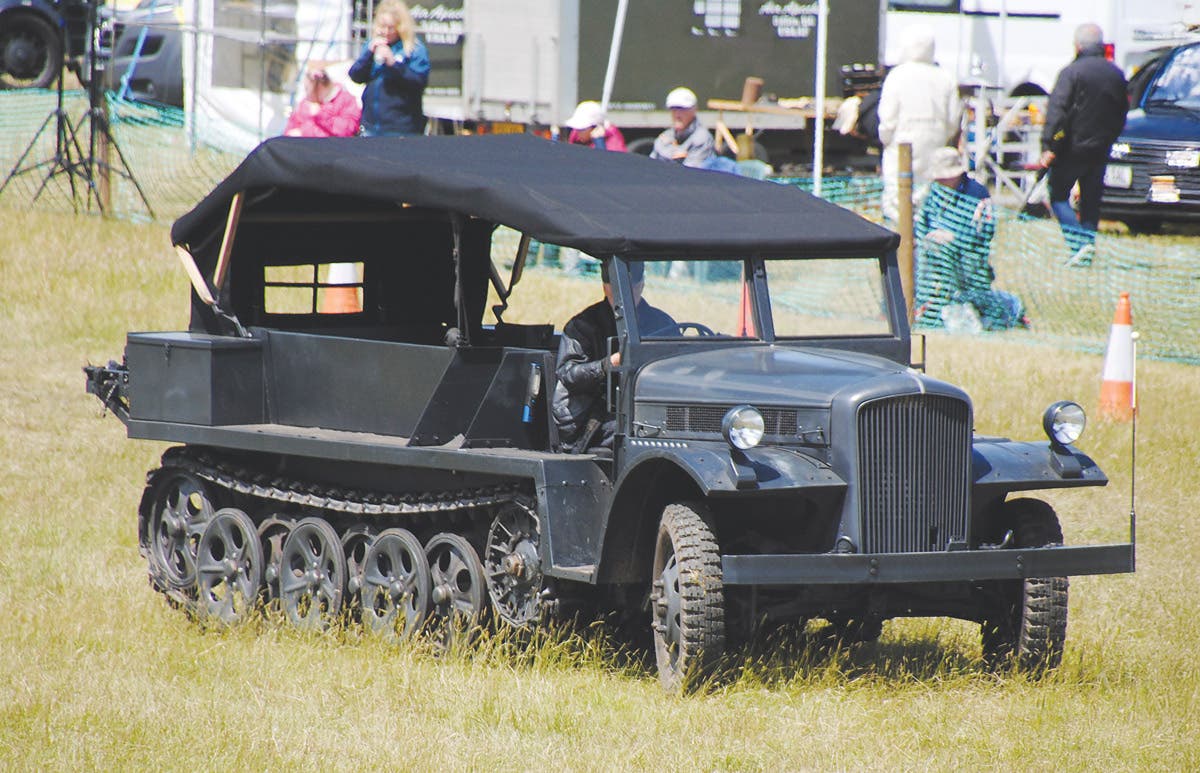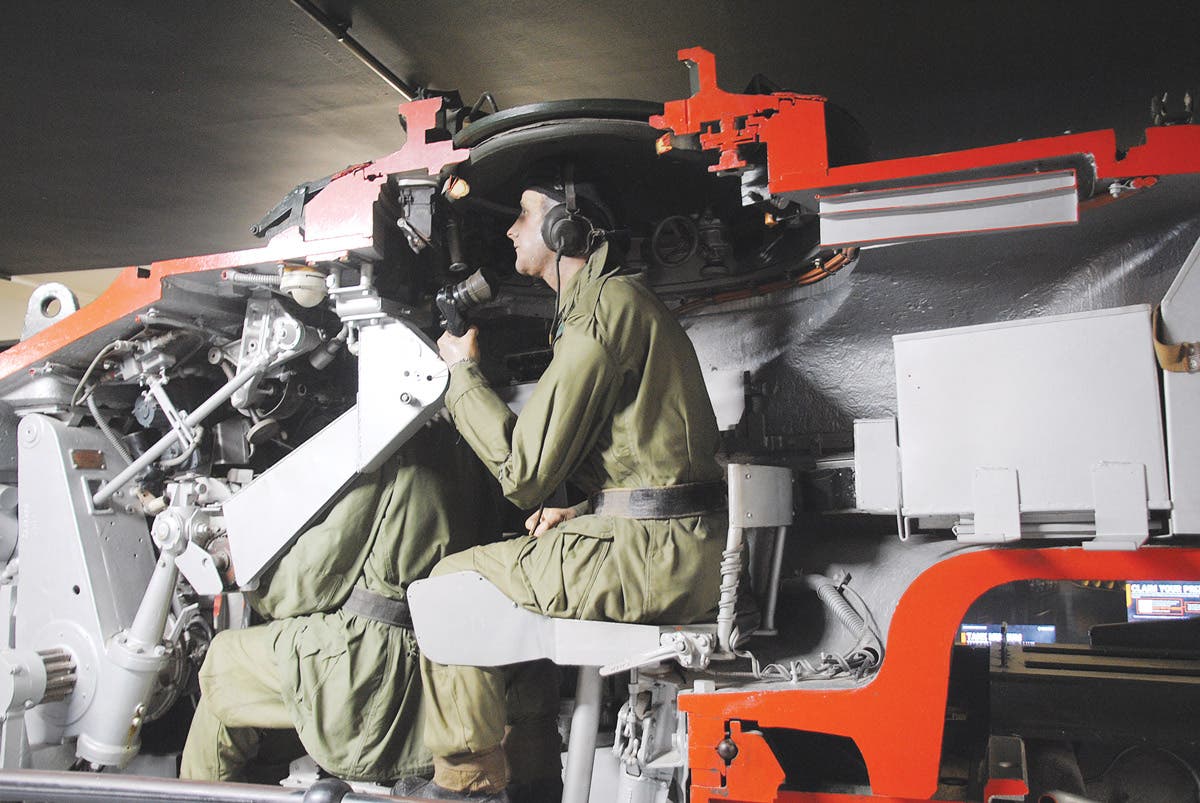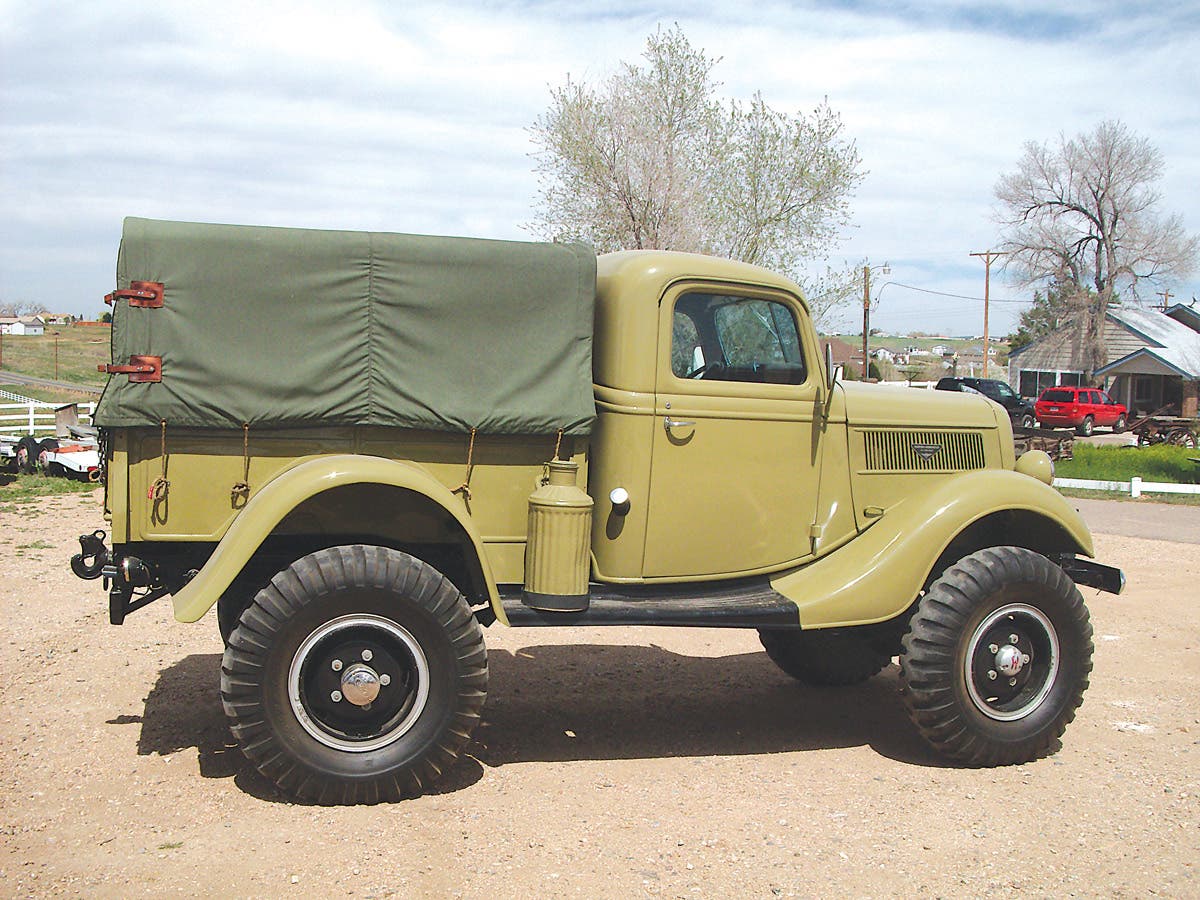The 50-ton Monster: A look at the FV4005
The FV 4005 self-propelled heavy anti-tank gun is still rumbling and shaking the earth!
Historic vehicles and aircraft, known as gate guardians, are sometimes to be seen on display outside regimental museums or airfields to where they usually have a historical connection. At the Tank Museum at Bovington, Dorset in England, there are several of these sentinels, and for the most part are easily recognizable. However, until 2007 there used to be one vehicle which stood out from the rest for its sheer size. The vehicle did not have any information by it, not even a name plate to say what it was. It turned out that it was a rare relic, known as the ‘FV4005’, left over from experiments conducted in the 1950s, during the period known as the “Cold War”.
It was the only surviving example of three such vehicles from which a series of self-propelled heavy anti-tank gun vehicles were intended to be developed for the British Army. A smaller, similar experimental vehicle, known as the FV 4004 ‘Conway’, had earlier been developed, mounting a 120mm calibre gun on a Centurion chassis that together with the FV4005 were intended to counter the heavyweight Soviet tanks emerging at the time.
Anti-tank guns and shoulder-fired anti-tank weapons, such as the 3-inch caliber M20 “Super Bazooka” launched projectiles which could penetrate eleven inches of armor, dated from WWII and were reaching the end of their usefulness. The first generation of true anti-tank missiles were beginning to emerge, but despite the promise of what such weaponry could deliver, old-fashioned thinking still held to the belief that conventional anti-tank guns were the answer. This included tank-mounted guns which led to the development some weapons of extraordinary calibre such as the Conway project. When this was cancelled the gun was not wasted and ended up being used to arm the massive 65-ton “Conqueror” tank which went into service with the British Army between 1955 and 1966. The same caliber gun was later used on the Chieftain tank, which continued in service until the late 1980s.
In the United States, experimental trials using guns of 175mm had been conducted by the military, but it was decided not to pursue development. During WWII German designers had experimented with large caliber weapons and built the prototype of a gigantic tank called the “Maus”, which mounted a 12.8cm gun with a 7.5cm co-axial gun. Another project was the larger E100 tank, which was planned to carry a 12.8cm gun, 15cm gun or possibly a 17.3cm gun. However, all of these were outclassed by the L4A1 gun mounted on the FV 4005 project with its enormous 183mm (7.2 inches) firepower.
See the FV4005 in action as well as more information from the Tank Museum below.
The go ahead for Stage 1 of the FV4005 project was given in November 1950, with assembly commencing in Workshop 5, at the Vickers’ plant in Elswick, Newcastle-upon-Tyne, where the workforce had wartime experience of building tanks, but nothing could have prepared them for a project on this scale. Undaunted by the size, the men commenced their work. It was decided to use three chassis from Mk 3 Centurion tanks to carry the great gun. First the turret was removed to allow the fitting of an open-topped test rig rotary magazine to hold the rounds of ammunition ready to fire. This led to Stage 2, which involved building a turret or superstructure around the breech and rotary drum loader to enclose the mechanisms.
Work on the FV4005 project is believed to have started proper in 1951/52, when the turret design allowed a full 360-degrees traverse. Measurements showed that on firing the gun produced 85.6 long tons of recoil, even when fitted with a concentric system. A recoil spade was fitted to the rear of the vehicle to help reduce the problem. Firing to the side was out of the question and later in the development stage it was decided to restrict firing across a limited frontal arc. The weight and length of the barrel was so great it had to be held by a barrel support fitted to the glacis plate. This device was a heavy structure in itself and took three men to handle it.
The final design of the turret, made up of a series of 14mm thick armor plates, gave the FV4005 a pillbox-shape in appearance. A large door was fitted in the rear of the turret for crew access and also allowed ammunition to be passed to replenish the automatic loader. The roof had two hatches which could be used to allow crewmen to evacuate the vehicle in an emergency. Due to the elevation range of the gun the load-assist system, designed to ram the shells into the breech, had to be removed. This led to a second loader being required to handle to separate load ammunition. There was room inside the turret for up to twelve rounds of ammunition to be carried. A rail and winch system was stored on the rear deck to allow the crew to resupply ammunition taken directly form an accompanying vehicle.
Some sources claim the prototype was ready for trials in July 1955, when the completed vehicle was sent to Paderborn in the then state of West Germany where at least 150 rounds were fired to test the gun and the stability of the vehicle. These trials revealed faults in the concentric recoil system which was replaced with the standard hydro-pneumatic recoil cylinder method. Different sources claim the FV4005 design had an operational range of 249 miles, which was just over a 10% reduction compared the 280 miles operational range for the standard version of the Centurion. The driver could access his position through the hatch in the hull and the controls would have been the same as the standard tank version. Armour protection was between 38mm and 76mm, the same level as fitted to the hull of the Centurion.
The shells fired by the gun were so large they had to be loaded in two parts; the same way as used on the big guns mounted on battleships. The actual projectile, weighing 145 lbs. and measuring almost 30 inches in length, was loaded into the breech. This was followed by the propellant charge weighing 68 pounds and measuring almost 27 inches in length. The barrel could be depressed to -5 degrees and elevated to +15 degrees and on firing the gun developed a muzzle velocity of 2,350fps with a maximum effective range of around 2,200 yards. The warheads were of the type known as High Explosive Squash Head (HESH), which on striking the target collapsed to flatten the explosive filling with detonation being initiated by a fuse in the base which exploded the charge against the armor plate. This caused a large ‘scab’ of armor to fly off inside the target vehicle to produce an effect known as ‘spalling’, killing the crew and wrecking the interior of the vehicle.
The great weight and bulk of the FV4005, with its high profile silhouette, would have made it a prime target on any battlefield and the object of attack by aircraft. This, plus the fact that the first generation anti-tank guided missiles such as the Malkara were in an advanced state of completion, rendered the project obsolete. The decision was taken not to waste any more resources in pursuing a project which would ultimately never work. In August 1957 the project was cancelled and the vehicles were dismantled. The Centurion tank hulls were returned to the army and the turrets sent to experimental establishments, one of which was the Royal Military College of Science at Shrivenham.
In 1970 Shrivenham gifted its FV4005 turret to the Tank Museum in Dorset, where it lay for many years without much attention being given to it other than curiosity value for visitors. Then, in 2007 a team of engineers from the museum decided to recreate the FV4005 in its final version by mounting the turret on the hull of a Mk 12 Centurion tank. That is how it came to be the gate guardian and where it remained until 2023 when the next chapter in the vehicle’s history was announced by the Tank Museum. In November that year the museum broke the news that it intended to rebuild the FV4005 to how it would have looked back in the late 1950s. An appeal was launched to raise the funds for the project which reached the incredible figure of £20,000 within 24 hours. This figure was matched by the on-line computer gaming company of World of Tanks.
The specialist vehicle restoration company of A.W. Hewes, based in Market Harborough, Leicestershire, was engaged to undertake the work. Within weeks preparations were made to begin work, starting first by removing tracks, the gun (weighing 3.7 long tons) cleaning the hull, chassis and other surfaces. The engine was removed and the turret housing which had to be refurbished. The aim was to get the vehicle ready and in running order in time for the 2024 Tankfest Show. This gave the restoration team a time frame of only six months in which to complete the work.
Despite the odds, they achieved what many thought would be impossible and the FV4005 rolled into the main arena over the last weekend of June 28-30 this year to thrill the crowds. It had gone from gate guardian and curiosity to being the star of the show. No doubt it will continue to take part in many more shows to come, being presented as the record-holder for the largest gun to ever be mounted on a tank chassis.
Love tracked vehicles? Here are a few more articles for your reading enjoyment.








